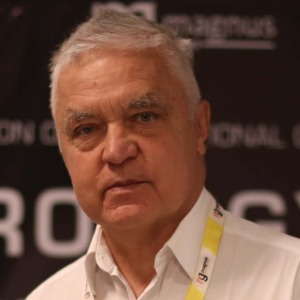Subthalamic Nucleus
The subthalamic nucleus (STN) is a cluster of neurons located deep within the brain that plays an important role in regulating motor and cognitive functions. It lies just above the thalamus and below the hypothalamus and has been the focus of immense research in recent decades due to its involvement in such diseases as Parkinson’s and epilepsy. The STN has been linked to the basal ganglia, and its primary role is to inhibit spurious motor activity via the motor loop, allowing for increased intentional and voluntary motor control. It also plays an important part in cognitive control and decision making, as it connects to the prefrontal cortex. Additionally, the STN has been implicated in modulating the emotional responses to external stimuli. Research has also suggested that the STN is a critical area in the brain with regards to drug, alcohol and nicotine addiction. One hypothesis is that it is involved in the development of an individual’s sensitivity to reward, such that those with a low STN activity may lack the motivation to engage in activities that give them pleasure. Finally, the STN has been on the cutting edge of innovation for treating neurological illnesses. Its rich connections to structures such as the substantia nigra, globus pallidus, and the cortex makes it an attractive target for treatments such as deep brain stimulation. With its compact size and intense connectivity, targeting the STN with acute electrical stimulation or pharmacological therapies can be used to restore neurological deficits and in some cases, bring about improved motor control and better decision-making. In conclusion, the STN is one of the most intriguing and exciting areas of neuroscience research. With its connection to various structures within the brain and its role in numerous functions, research into this area promises to unlock insights into a variety of neurological disorders. Furthermore, therapies targeting this region have already been employed in treating various diseases, with much still left to explore.

Ken Ware
NeuroPhysics Therapy Institute, Australia
Robert B Slocum
University of Kentucky HealthCare, United States
Yong Xiao Wang
Albany Medical College, United States
W S El Masri
Keele University, United Kingdom
Jaqueline Tuppen
COGS Club, United Kingdom
Milton Cesar Rodrigues Medeiros
Hospital Santa Casa de Arapongas, Brazil




Title : Perception and individuality in patient cases identifying the ongoing evolution of Myalgic Encephalomyelitis/Chronic Fatigue Syndrome (ME/CFS)
Ken Ware, NeuroPhysics Therapy Institute, Australia
Title : Narrative medicine: A communication therapy for the communication disorder of Functional Seizures (FS) [also known as Psychogenic Non-Epileptic Seizures (PNES)]
Robert B Slocum, University of Kentucky HealthCare, United States
Title : Rabies: Challenges in taming the beast
Alan C Jackson, University of Calgary, Canada
Title : Neuro sensorium
Luiz Moutinho, University of Suffolk, United Kingdom
Title : Traumatic Spinal Cord Injuries (tSCI) - Are the radiologically based “advances” in the management of the injured spine evidence-based?
W S El Masri, Keele University, United Kingdom
Title : Personalized and Precision Medicine (PPM), as a unique healthcare model through biodesign-driven biotech and biopharma, translational applications, and neurology-related biomarketing to secure human healthcare and biosafety
Sergey Victorovich Suchkov, N.D. Zelinskii Institute for Organic Chemistry of the Russian Academy of Sciences, Russian Federation